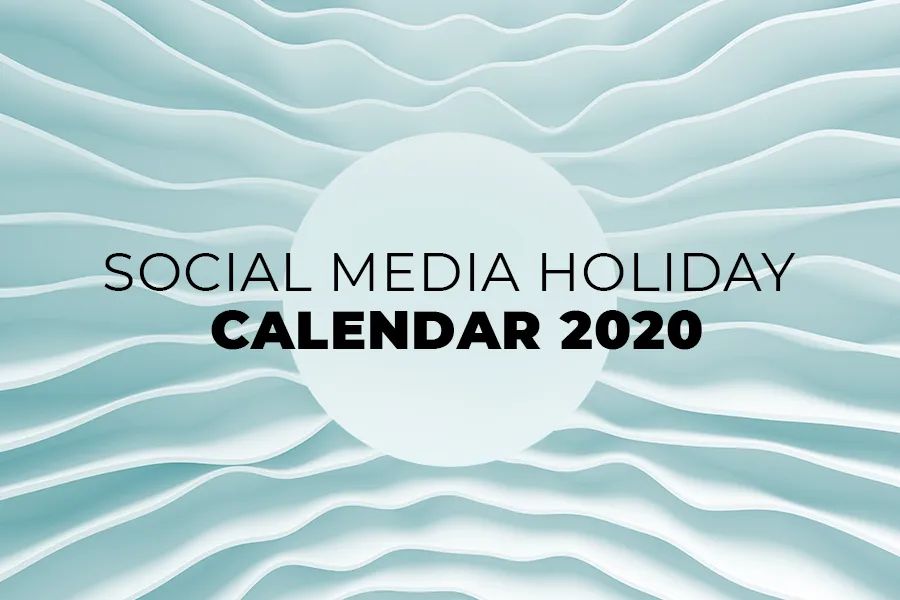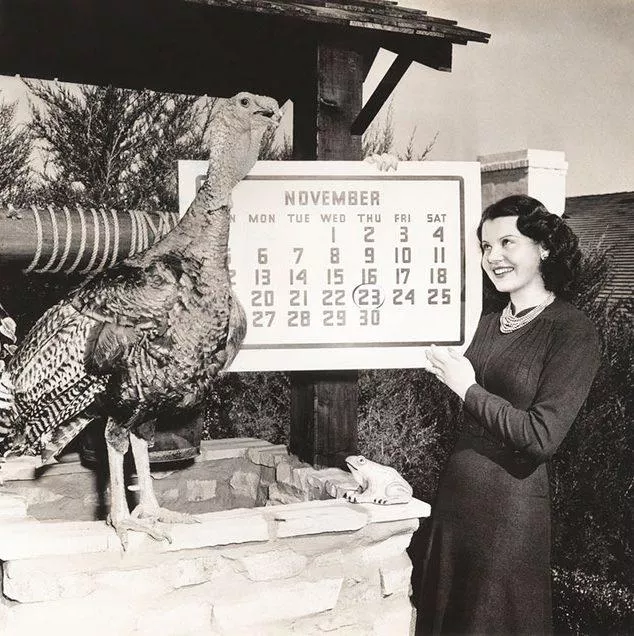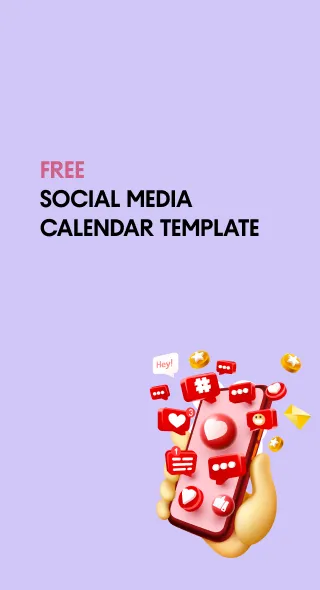How to Create a Social Media Content Calendar in 2025 + Free Template
To succeed, social media managers today must be multitasking gurus, regularly publishing engaging content, tracking the performance of multiple accounts, dealing with negative feedback, and keeping up with the latest trends. Fortunately, marketing professionals are not alone in this daily battle, as they can rely on social media calendars.
In today’s article, we share everything you need to know about social media content calendars, from the opportunities they open up to the key types and helpful tools. Learn the essential steps to developing an impactful posting plan, and download a ready-made social media calendar template to save time and enhance collaboration with your team.
What is a social media calendar?
A social media content calendar is a comprehensive plan of your upcoming posts for various social channels. Think of your SMM strategy as a well-orchestrated symphony—each element needs perfect timing and coordination. At its core, a social media calendar template acts as your master conductor’s score, orchestrating every post, campaign, and interaction across your digital platforms with precision and purpose.
As a potent strategic tool, a social media planning calendar encompasses far more than just scheduling posts. It serves as your command center for digital communications, enabling seamless content management and team collaboration. Within its framework, you’ll find comprehensive details for each piece of content, including:
- Specific social media platforms: Instagram, YouTube, TikTok, LinkedIn, Facebook, etc.
- Publishing dates and posting times based on audience analytics.
- Content types and formats, including platform-specific (stories, reels, YouTube shorts, etc.)
- Visual assets (images, videos, memes, or GIFs).
- Content categorization for brand awareness, education, or promotion.
- Post topics or copy if they are short.
Modern social media calendars function as both visualization tools and management systems, allowing teams to:
- Track content creation progress from ideation to publication
- Maintain brand consistency across all channels
- Coordinate multiple campaigns simultaneously
- Monitor deadlines and campaign milestones
- Analyze performance data for strategic adjustments
- Implement UTM tracking for precise analytics
The most effective social media calendars incorporate advanced features like geo-targeting options and automated scheduling capabilities. They seamlessly integrate with existing marketing tools, creating a unified workflow that enhances productivity and ensures strategic alignment across all digital marketing efforts.
Benefits of using a social media calendar
Social media calendars turn sporadic posting into impactful marketing campaigns. Well-organized content management delivers measurable advantages in visibility and efficiency. Enhanced quality control, performance tracking, and team collaboration revolutionize marketing effectiveness while optimizing resource utilization.
1. It streamlines your workflow
A social media calendar transforms content creation through intelligent task sequencing and automation. SMM managers can batch-create materials weeks ahead, significantly reducing daily pressures. Knowing that a particular post needs to be prepared for a certain day, you can coordinate the work of a designer and copywriter in advance. It allows you to allocate team resources effectively.
2. You save time
If ideas and plans are not established, most of the time in developing content will be spent on these tasks. If a plan is well thought out and prepared in advance, writing posts on ready-made topics will be easy. Moreover, a posting calendar allows for planning multiple social media posts at once. For example, scheduling posts for the current week on Monday frees up your time for other essential tasks. This systematic approach enables a deeper focus on creative excellence rather than routine maintenance.
3. Posting becomes consistent
Maintaining social media posting is fundamental to engaging your audience effectively. Your followers need to know they can expect new content from you at a certain frequency, and it’s best not to disappoint them. Using a social media calendar ensures a predictable flow of content, which allows you to establish ongoing communication and keeps your account fresh and appealing. A posting calendar also allows you to post content at the most appropriate time for your audience, even if it doesn’t coincide with your working hours.
4. It drives better content
With a well-thought-out social media calendar, a brand has more time to create high-quality content likely to resonate with its audience. In addition, by planning your posts, you see a bigger picture and can maintain a balance of different types and formats of content. It becomes clear what amount of your posts are promotional and what amount are educational. A social media schedule helps SMM specialists avoid overwhelming followers with one topic or format, and keep posts diverse.
5. It’s easier for teams to collaborate
A social media content calendar can elevate teamwork. It serves as a single hub where multiple team members (marketers, designers, copywriters) can collaborate, align key messages, and track progress. This tool allows brands to synchronize their marketing team’s efforts and ensure consistent content strategy implementation. Social media calendars reduce the likelihood of communication mistakes and content duplication.
Key types of social media content calendars
➤ Monthly social media calendars optimized for long-term strategic planning. They provide comprehensive visualization while maintaining adaptability to market changes. This type is particularly effective for enterprises coordinating complex, concurrent initiatives.
➤ Weekly social media calendars enable precise control over short-term execution with built-in agility. This framework facilitates rapid response to emerging trends while supporting continuous performance optimization. Weekly calendars are ideal for dynamic industries requiring frequent content adjustments.
➤ Daily social media calendars deliver granular control over timing and engagement metrics. They are essential for companies managing high-volume content across time zones.
➤ Content-based social media calendars structure content by type (educational, promotional, entertainment) rather than chronologically. They maintain optimal content balance while simplifying campaign tracking. Such calendars are perfect for brands managing diverse content portfolios with multiple objectives.
➤ Platform-based social media calendars customize scheduling to each channel’s requirements and audience behaviors. They integrate platform-specific formatting guidelines and optimal posting times, which is essential for maintaining a consistent brand voice across diverse channels.
➤ Campaign-based social media calendars organize content around targeted marketing initiatives. Optimized for product launches and coordinated promotional efforts.
➤ Event-based social media calendars coordinate content with key dates, industry events, and seasonal opportunities. They are particularly valuable for businesses with cyclical marketing patterns.
➤ Editorial social media calendars combine traditional publishing workflows with digital distribution systems. This type is ideal for organizations prioritizing story-driven content strategies.
Each framework delivers specific advantages, and many organizations benefit from hybrid approaches. Success depends on aligning structures with team capabilities, content requirements, and business objectives. When selecting an optimal social media calendar type, consider key factors like approval workflows, team distribution, and industry dynamics.
How to create a social media calendar: step-by-step guide
1. Define specific social media goals
To develop a precise and efficient social media calendar, start by defining the overall goals of your social media strategy. Whether it’s brand awareness, lead generation, increasing engagement, or driving traffic, your objectives will guide your content creation and scheduling. To turn abstract goals into measurable outcomes:
- Set platform-specific benchmarks using historical performance data.
- Create tiered objectives across awareness, consideration, and conversion phases.
- Define specific engagement metrics with percentage targets for reach, clicks, and conversions.
- Map content distribution across audience segments and time zones.
- Establish quarterly growth targets for followers and engagement.
- Track ROI metrics for promotional investments.
Using the SMART approach, make your goals specific, measurable, achievable, relevant, and time-bound. Each objective requires clear metrics, defined timeframes, and assigned responsibilities. Maintain flexibility within your framework to respond quickly to emerging opportunities while preserving strategic alignment.
2. Conduct a social media audit
Before you start creating a social media calendar, it’s important to understand the current state of your social media accounts. You need to assess their security, goals, audience information, team tasks, and the effectiveness of past posts. All this will help you identify areas for further development. Evaluate each channel’s unique contribution while identifying content types consistently driving results.
Get deeper insight into audiences through demographic analysis and behavioral patterns. Map engagement trends across different time zones and geographic regions. Review competitor strategies to identify market gaps and opportunities. Finally, assess your publishing cadence, evaluating whether your current frequency aligns with audience preferences and platform algorithms. Regular performance analysis will allow you to make data-driven improvements to a social media calendar.
3. Choose your platforms
Not every audience is represented on all platforms. Analyze demographic data and patterns across channels to identify where your target audience actively participates. Consider each platform’s unique strengths—LinkedIn’s professional focus, TikTok’s creative dynamics, or Instagram’s visual emphasis.
Different platforms require different strategies for developing a social media calendar. Evaluate technical requirements and resource demands for each channel. Some platforms require frequent daily posts, while others thrive on less frequent, higher-quality content. Match these requirements against your team’s capabilities and content creation resources.
Focus on platforms that align with your business objectives rather than pursuing every available channel. Quality engagement on two or three carefully chosen social media channels typically delivers better results than diluted efforts.
4. Brainstorm post ideas and create a content mix
Analyze audience data to identify trending topics for your future social media calendar. Create content buckets aligned with strategic pillars—educational content drives authority, while entertainment builds community engagement. Map content categories across awareness, consideration, and conversion stages for maximum impact.
Establish a balanced content mix following the proven 2/3 informational and 1/3 promotional ratio. Leverage data-driven insights to determine optimal content types for each platform. Consider seasonal trends, industry events, and audience behaviors when planning themes. Integrate user-generated content opportunities to boost authenticity while reducing creation demands.
You can also develop content series that maintain audience interest through consistent narrative threads. Color-code content categories in your social media calendar for visual planning, and implement regular performance reviews to optimize content strategy and delivery methods.
5. Use a social media calendar template
There is no need to spend time creating a content plan from scratch, as you can rely on a pre-made template. Professional templates streamline workflow by eliminating guesswork and accelerating implementation.
We’ve created a free social media calendar template to free you from tedious manual work. Download it right now to ensure consistent posting and enhance social media engagement.
Such templates provide structure through pre-configured fields, calculation tools, and integrated tracking. They often incorporate customizable sections for visuals, captions, and platform-specific requirements. Modern social media calendar templates feature color-coding for content categorization, collaboration tools, and dynamic fields adapting to campaign needs. They integrate performance analytics while maintaining brand flexibility.
6. Schedule your posts
To maximize your social media efforts, it’s crucial to share content with your audience when they’re most active. Timing is key to high engagement. Optimize visibility by aligning content distribution with peak audience activity windows for maximum impact and reach.
Use these platform-specific insights to plan your social media content calendar:
- Facebook drives maximum impact on Thursday or Friday, from 7 to 9 AM
- Instagram posts perform best on Monday, from 12 AM to 6 AM
- LinkedIn engagement peaks at 9 AM on Tuesday and Wednesday
- YouTube videos get the most views on Sunday, from 2 PM to 4 PM
- TikTok content thrives on Thursdays at 7 PM
- X (formerly Twitter) engagement maximizes from 10 AM to 1 PM on weekdays
Remember that optimal timing varies by industry, audience, and content type. Regular analysis enables data-driven adjustments that maximize reach and engagement across all platforms.
7. Prepare and create content
When your social media calendar planning is complete, you can start pre-creating content for future posts. Build comprehensive asset libraries: organize visuals, draft varied captions, and prepare engaging conversation starters. This approach ensures you meet all deadlines and helps maintain a consistent brand voice.
To streamline your creative process, use stock content platforms like Depositphotos to quickly find and download high-quality multimedia files. Need something unique? Rely on our AI Image Generator to create commercially-safe images based on your text prompt in seconds.
Track emerging topics for timely adaptation opportunities. Maintain organized asset management through clear categorization and tagging. Regular audits will help you ensure content freshness while identifying successful elements for content repurposing.
8. Track performance and make adjustments
Schedule weekly analysis sessions to evaluate metrics against KPIs. Focus on engagement timing, content format performance, and audience response rates. Use insights to refine your social media calendar and content mix. Monitor hot trends and competitor activities to identify creative opportunities while maintaining brand authenticity.
Leverage automation tools for real-time tracking, enabling quick adjustments for emerging trends. Document successful strategies while analyzing underperforming content. Continuous refinement based on performance data will drive sustainable growth and maximize your social media marketing ROI.
Tools you can use for creating your social media calendar
Fundamental tools delivering core functionality:
- Google Sheets or Excel enables collaborative planning through customizable spreadsheets and integrated calendars with comment features.
- Project management platforms like Wrike or Asana facilitate task assignment and workflow optimization.
- Notion provides flexible workspace customization with knowledge base integration.
Enterprise platforms lead innovation through advanced capabilities:
- Sprout Social combines interactive planning with AI-powered optimization, Smart Inbox engagement tools, and comprehensive team collaboration features.
- Buffer delivers unified workspace customization, advanced analytics, scheduling, and AI-generation features.
- Hootsuite provides drag-drop functionality, AI posting suggestions, social listening features, and integrated analytics tracking.
Social Media Calendar FAQs
Why is a social media calendar important?
A social media calendar helps you stay organized, plan content ahead of time, and ensure consistency. It improves time management, enables better strategy alignment, and helps track goals. Additionally, it ensures that you post the right content at the right time and on the right platform.
What is the difference between a social media calendar and a content calendar?
Content calendars encompass all marketing materials, including blog posts, emails, and downloadable assets, while social media calendars focus exclusively on social platforms. The difference lies in scope and detail. Content calendars maintain broader marketing alignment, while social media content calendars manage post-level specifics.
How often should I update my social media calendar?
Social media calendars require regular updates to maintain effectiveness. Weekly reviews enable timely adjustments based on performance data, while monthly audits assess broader trends. Implement quarterly strategic evaluations to refine goals and update content categories. Daily monitoring ensures the rapid optimization of campaigns through real-time feedback.
Can a social media calendar help with content creation?
Absolutely. Content planning tools transform brainstorming into systematic ideation, helping teams identify opportunities. Through integrated analytics, creators track successful formats while maintaining quality. Social media calendars enable efficient theme development and cross-platform optimization.
How far in advance should I plan my social media content?
Effective planning requires a minimum 30-day advance content pipeline, with major campaigns structured 60-90 days ahead. Maintain the adaptability of your social media calendar by scheduling foundational content early while reserving flexibility for trending topics. Seasonal promotions demand 120-day preparation, while rapid-response content needs 24-48 hour buffers for quality assurance and approvals.
Elevate your social media game with a comprehensive social media calendar
As we’ve explored, a comprehensive social media calendar delivers measurable visibility, engagement, and team efficiency advantages. You can maximize your social media marketing impact by implementing structured workflows, leveraging advanced tools, and maintaining data-driven refinements while optimizing resource utilization.
Remember: success demands continuous evolution. Stay agile, experiment with emerging formats, and maintain authentic connections with your community. Through disciplined planning, creative innovation, and consistent performance tracking, your brand will thrive in 2025 and beyond.
More articles about social media
10 Outstanding Profile Picture Ideas for Social Media















